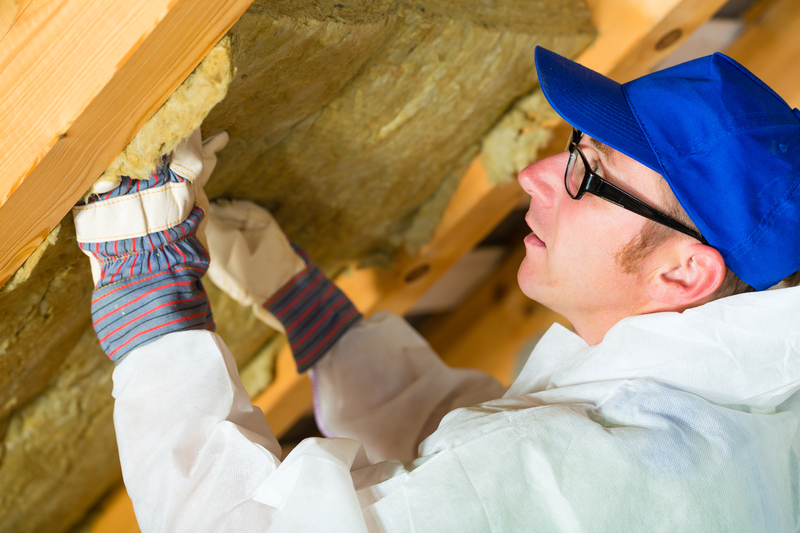Your Guide to Cleaning Mould Off Window Sills
Posted on 15/08/2025
Your Guide to Cleaning Mould Off Window Sills
If you're noticing unsightly black or green patches along your window sills, you're not alone. Mould on window sills is a common problem in many homes, especially in areas prone to moisture and condensation. While it may seem like an unimportant cosmetic issue, mould can present a real threat to your property--and your health. In this comprehensive guide, we'll walk you through the best methods for cleaning mould off window sills, outline essential safety tips, and provide preventative strategies to stop mould from returning.
Understanding Mould: Why Does it Grow on Window Sills?
Mould (or mold) is a type of fungus that thrives in damp, poorly ventilated environments. Unfortunately, window sills are the perfect breeding ground for mould because:
- They are often exposed to condensation from temperature fluctuations.
- They receive minimal air flow, especially behind curtains or blinds.
- They accumulate moisture from leaks, spills, or humidity.
When airborne mould spores land on a moist surface, they can grow rapidly, leading to visible patches and spreading if untreated.

Why Is It Important to Remove Mould from Your Window Sills?
Aside from its unsightly appearance, mould can have serious repercussions:
- Health Risks: Exposure to mould may cause allergies, asthma, respiratory issues, skin irritation, or even more severe reactions in sensitive individuals.
- Structural Damage: Over time, mould can break down wood, paint, and other materials, leading to rot and costly repairs.
- Decreased Property Value: Mould can deter buyers and lower the value of your property if left unaddressed.
Quick Signs You Have Mould on Your Window Sills
- Black, green, white, or brown spots on the window sill surface.
- Musty or earthy odour near the windows.
- Peeling paint or dark stains on the wood or painted surfaces.
- Visible condensation or dampness along windows and frames.
The Right Way to Clean Mould Off Window Sills
Cleaning mould effectively requires a systematic approach that keeps you safe and stops spores from spreading throughout your home. Follow our step-by-step guide for removing mould from window sills:
Preparation: Gather Your Supplies
- Protective gloves (rubber or disposable)
- Safety goggles and a mask (P2 or N95 recommended)
- Old clothes or disposable coveralls
- Cleaning solution (see options below)
- Bucket of warm water
- Soft brush or non-abrasive sponge
- Microfiber cloths or disposable rags
- Spray bottle (optional)
- Plastic bags for discarding waste
Choose the Right Cleaning Solution
There are several effective solutions for cleaning black mould off window sills:
- Commercial mould remover: Products formulated to 'kill and clean' mould are highly effective. Always follow the manufacturer's directions.
- White vinegar (natural option): Vinegar's acidity kills approx. 82% of mould species. Pour undiluted vinegar into a spray bottle.
- Baking soda: Mix one teaspoon of baking soda with two cups of water to help scrub and deodorize surfaces.
- Hydrogen peroxide (3%): Kills bacteria and mould spores. Test on a hidden area first.
- Bleach (last resort): Use a solution of one part bleach to ten parts water for non-porous materials. Not recommended on wood as it damages fibres.
Tip: Always avoid mixing cleaning agents like vinegar and bleach, as this can produce toxic fumes.
Step-by-Step Instructions for Safely Cleaning Mould from Window Sills
- Open windows for ventilation. Protect yourself from fumes and airborne spores.
- Wear personal protective equipment (PPE). Gloves, mask, goggles, and old clothes are a must.
- Remove loose debris or dust. Gently use a dry cloth or vacuum (with HEPA filter) to clear away loose dirt before you wet clean. Dispose of the cloth/vacuum contents in a sealed plastic bag.
- Apply the chosen cleaning solution. Spritz directly onto the affected area. Let it sit for at least 10 minutes to break down the mould.
- Scrub carefully. Use a soft brush, sponge, or old toothbrush to gently scrub the sill. Wipe with a damp microfiber cloth.
- Repeat if necessary. For stubborn spots, reapply cleaner and repeat.
- Rinse thoroughly. Wipe down with a cloth dampened with clean water to remove chemical residue.
- Dry completely. Moisture encourages more mould. Use a dry cloth and leave the window open until the area is 100% dry.
- Dispose of contaminated rags, sponges, and gloves. Place them in sealed bags and discard.
Special Considerations for Different Types of Window Sills
Wooden Window Sills
*Wood can be particularly vulnerable to mould and rot.* Avoid soaking the wood. Use minimal liquid and dry the area promptly. Consider treating cleaned wood with a mould-resistant wood preservative to prevent regrowth.
Painted or Metal Sills
Painted and metal surfaces can often be scrubbed a bit more vigorously. Be sure to check for chipped paint (which could be lead-based in older properties) and consider repainting with mould-resistant paint after cleaning.
UPVC/Plastic Window Sills
UPVC or plastic sills tolerate most cleaning agents well. Regular wiping with vinegar or commercial sprays keeps them mould-free.
Preventing Mould From Returning on Your Window Sills
Once you've successfully removed mould from your window sills, the goal is to stop it coming back. Here are key strategies:
- Ventilate rooms: Regularly open windows or use extractor fans to reduce indoor humidity.
- Wipe condensation daily: Especially on cold mornings, use a dry cloth to remove dew from panes and sills.
- Check for leaks: Inspect window seals for gaps or deterioration and repair promptly.
- Keep sills clutter-free: Avoid placing objects that trap moisture (like vases, jars, or fabric) on sills.
- Use a dehumidifier: Especially in humid homes, this helps maintain optimal indoor relative humidity (ideally below 60%).
- Repaint with mould-resistant paint: Upgrade to specialist paints and primers on cleaned areas.
- Insulate windows: Consider upgrading to double glazing to reduce temperature difference and condensation.
Frequently Asked Questions About Mould on Window Sills
Is it safe to clean mould myself, or should I hire a professional?
In most cases, minor patches of mould on window sills can be dealt with safely using household products and basic PPE. However, for extensive infestations, black mould affecting more than one square metre, or for individuals with respiratory sensitivities, hire a mould remediation specialist for peace of mind and better results.
Can cleaning mould on window frames be done with just soap and water?
While soap and water can physically remove mould, they do not kill spores and can leave moisture behind, allowing it to return quickly. Always use mould-killing solutions like vinegar, hydrogen peroxide, or specialist sprays.
Why does mould keep coming back on my windowsill?
Recurring mould usually indicates an ongoing moisture problem--condensation, leaks, or poor airflow. Address the root cause, such as improving ventilation or fixing window seals, to prevent new growth.
What should I do if I have black mould on a wooden window sill?
Clean as described above, using minimal liquid and drying thoroughly. If mould has penetrated deeply or the wood feels soft and spongy, it may need to be replaced. Always repaint with anti-mould paint after treatment.
Are there natural remedies for cleaning mould off window sills?
Yes, white vinegar and baking soda are both effective and eco-friendly solutions for minor cases of window sill mould. For best results, spray undiluted vinegar and let it sit before wiping.

When to Call in the Experts
If you've tried cleaning and the mould on your window sills keeps returning, or if you have mould spreading into the walls, plaster, or insulation, it's time to call a professional. Symptoms of water ingress (like peeling wallpaper or damp smells) are signs of deeper issues requiring expert assessment.
- Persistent respiratory symptoms from household members
- Mould covering extensive areas (more than one square metre)
- Sensitivity to chemicals or spores
- Uncertainty about the building's construction materials (lead or asbestos risks)
Conclusion: Keep Your Window Sills Clean and Mould-Free
*Tackling mould on window sills doesn't just improve your home's appearance; it helps ensure a healthier environment for you and your loved ones.* With the right approach, removing mould from window sills is straightforward--and prevention is always better than cure. Regular maintenance, cleaning, and moisture control are the best ways to say goodbye to mould for good. If in doubt, contact a certified professional for advice.
Stay proactive, stay healthy, and enjoy clearer, cleaner views through your windows!



